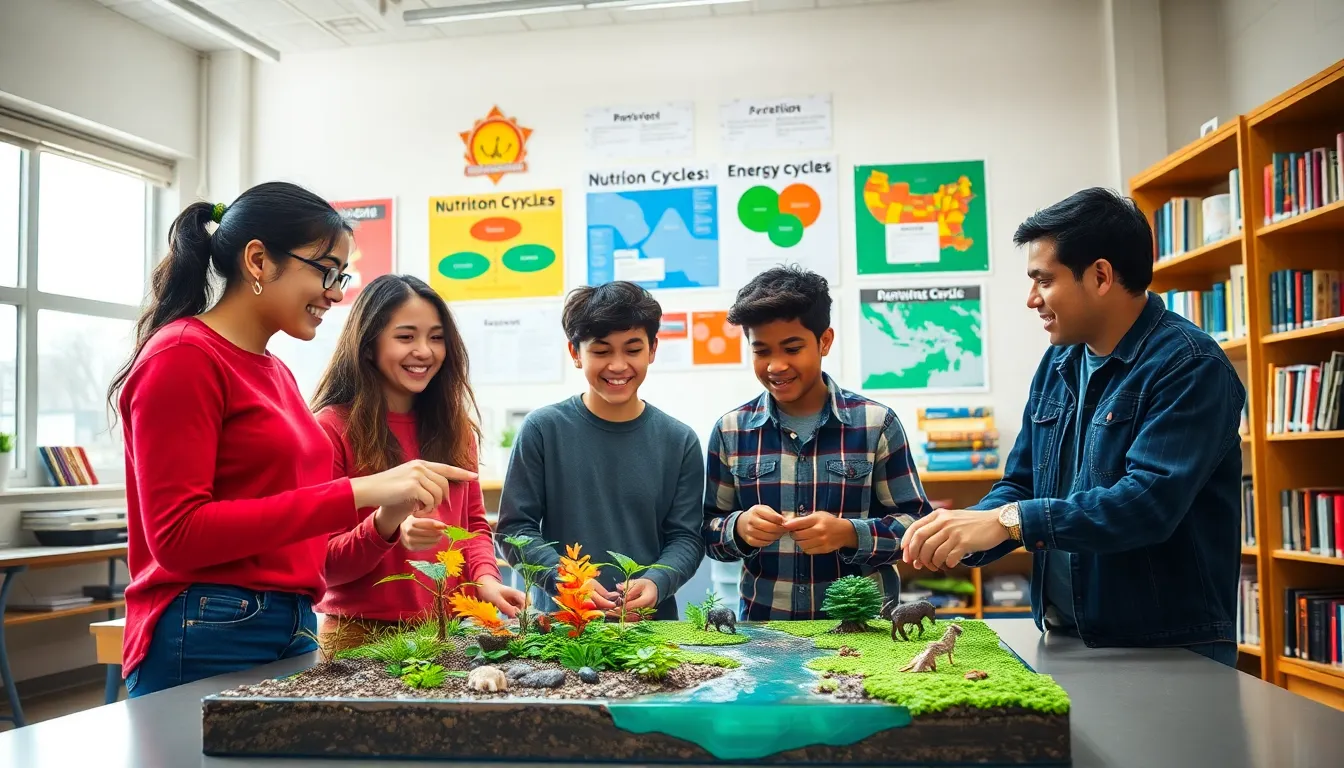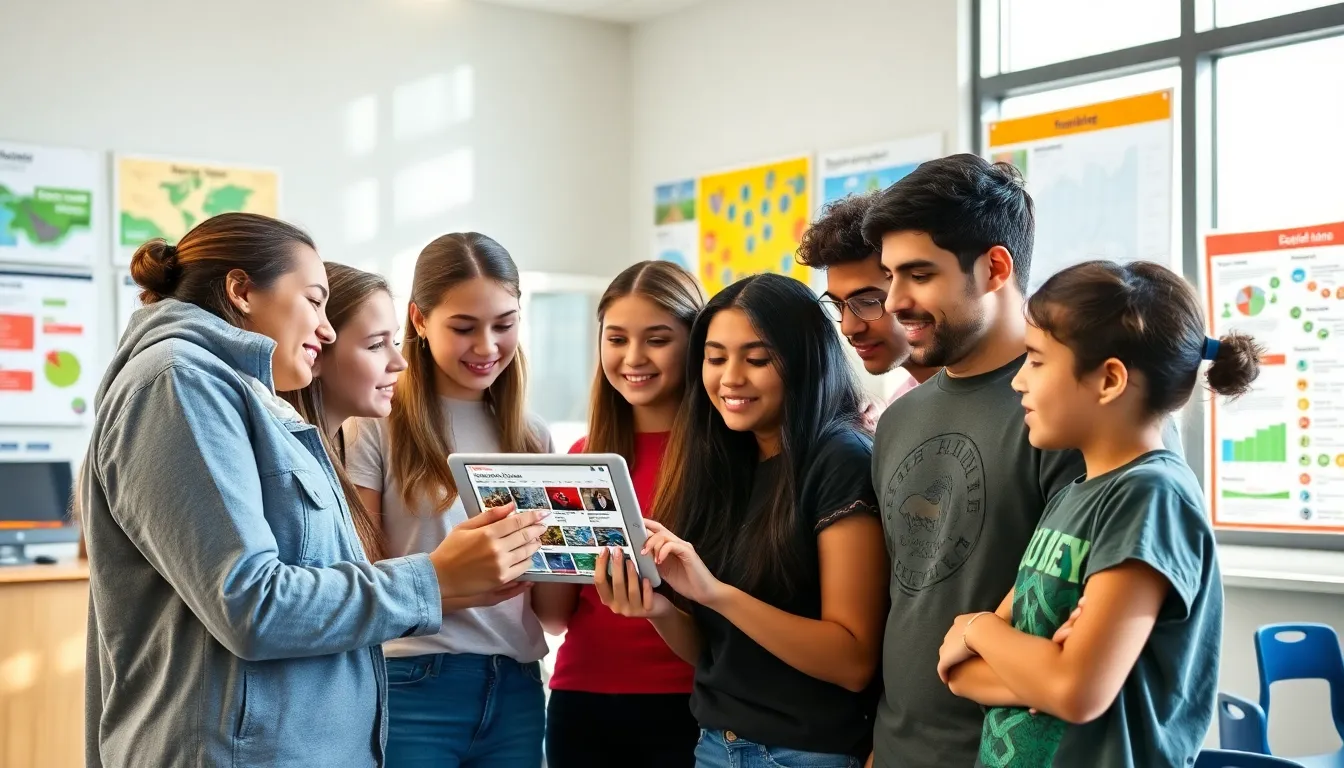Integrated science education represents a transformative approach to learning that blends various scientific disciplines into a cohesive curriculum. This method not only promotes deeper understanding but also enhances problem-solving skills among students. With the advent of innovative platforms like Redwebzine, educators have new opportunities to enrich their lesson plans and engage students. This article delves into the potential of integrated science education, particularly how Redwebzine can play a pivotal role in this evolving educational landscape.
Table of Contents
ToggleUnderstanding Integrated Science Education

Integrated science education is an interdisciplinary approach that combines various branches of science, such as biology, chemistry, and physics, into a unified learning experience. Rather than teaching these subjects in isolation, integrated science education focuses on the connections between disciplines, enabling students to see the bigger picture. This approach encourages critical thinking and collaboration, as students learn to integrate knowledge from different fields. For example, a unit on ecosystems might include elements of chemistry (nutrient cycles), biology (organism relationships), and physics (energy flow). By seeing how these scientific domains interrelate, students develop a holistic understanding of scientific principles and their applications in real-world scenarios.
The Role of Redwebzine in Education
Redwebzine is an innovative digital platform designed to enhance the learning experience, particularly in integrated science education. By providing a repository of articles, interactive modules, and multimedia resources, Redwebzine enables educators to create a more dynamic and engaging classroom environment. The platform offers a wealth of information on current scientific discoveries and advancements, making it easier for teachers to incorporate real-world applications into their lessons. Also, Redwebzine encourages collaboration among students through discussion forums, promoting communication skills and peer learning. As educators seek to integrate technology in their teaching, Redwebzine stands out as a valuable tool for enhancing science education.
Benefits of Integrated Science Education
The benefits of integrated science education extend beyond academic achievement. First and foremost, it fosters a deeper understanding of scientific concepts by highlighting the interdisciplinary nature of science. Students learn to transfer knowledge from one discipline to another, enhancing their analytical skills and creativity. Also, integrated science education promotes engagement by making lessons more relevant to students’ everyday lives. When students see the connections between disciplines, they are more likely to develop a lifelong interest in science. Also, integrated science can enhance teamwork skills, as many projects require collaboration across different areas of knowledge. In a world that increasingly relies on interdisciplinary solutions for complex problems, this educational model prepares students for future challenges.
Implementing Redwebzine in the Classroom
Incorporating Redwebzine into the classroom requires thoughtful planning and consideration of curriculum goals. Teachers can start by identifying units or topics where Redwebzine’s resources could enhance learning. For example, a lesson on climate change could integrate articles and videos from Redwebzine to provide current data and discussions from experts. Teachers can also create assignments that require students to explore specific topics on the platform and share their findings with classmates. Besides, educators can use interactive features, such as forums, to help collaborative projects, enhancing peer interaction and communication skills. By establishing a framework that utilizes Redwebzine effectively, educators can maximize the benefits of integrated science education.
Challenges and Solutions
Even though its many benefits, implementing integrated science education through platforms like Redwebzine is not without its challenges. One common hurdle is the need for teacher training. Educators may feel uncertain about how to effectively integrate different disciplines and use digital resources. To address this, schools can provide professional development workshops that focus on interdisciplinary teaching strategies and effective use of technology.
Another challenge is ensuring that all students have equitable access to the necessary technology. Schools must explore means to provide devices and internet access to all students, potentially through partnerships with local businesses or grants. Finally, curriculum alignment can pose difficulties, as integrated science requires careful planning to meet educational standards in all relevant disciplines. Teachers can collaborate with curriculum coordinators to ensure that lessons remain aligned with state and national standards while still embracing an integrated approach.
Future Directions in Integrated Science Education
The future of integrated science education looks promising, especially with the continuous evolution of technology and educational platforms like Redwebzine. As educational institutions embrace more interdisciplinary curricula, students will have the chance to explore complex global issues such as climate change and sustainability from various scientific angles. Innovations in virtual and augmented reality can provide immersive experiences, bringing abstract concepts to life in a way that traditional methods cannot achieve.
Also, collaboration among educators globally will foster the sharing of best practices and resources, allowing for a more unified approach to integrated science education. Online platforms will likely continue to play a vital role, as they can be updated regularly to remain relevant and engaging for students.
Conclusion
Integrated science education represents a vital approach to preparing students for the complexities of the modern world. As digital platforms like Redwebzine provide educators with innovative tools and resources, the potential for enriched learning experiences grows exponentially. By embracing integrated approaches, educators can cultivate a generation of learners equipped with the skills and knowledge to navigate and address multifaceted challenges. The journey of integrating science education is ongoing, and by leveraging technology effectively, the educational community can pave the way for a brighter, more scientifically literate future.



